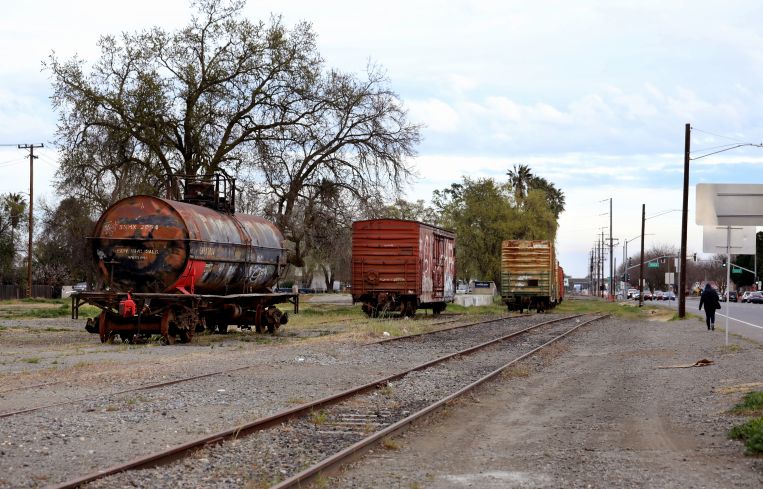Winning the Opportunity Zone 2.0 Sweepstakes — the Rural vs. Urban Divide
By G. Lamont Blackstone September 26, 2025 7:00 am
reprints
Across the nation, we can expect a scramble among mayors and county executives. They are tasked with responding to the capital-raising opportunities inherent in the revised federal Opportunity Zone (OZ) program. And, in state capitals, governors will be determining which low-income communities will be approved for new OZ designations.
The revised legislative framework establishes a rural versus urban divide, which is somewhat analogous to the EB-5 investor program. Consequently, governors will have a significant decision to make to meet the program’s target of July 1, 2026. They must select which areas will be submitted to federal officials as zones for attracting tax-incentivized equity capital.

Consider that the classic definition of politics is “the process of determining who gets what, when, where and how.” Over the coming months, we can expect to see the politics of economic development in action. That also could include input from each state’s legislators.
Accordingly, a filtering process will be implemented in governors’ offices to determine which low-income census tracts will receive the IRS designations. And many governors will face an exercise in balancing diversity — specifically, the allocation of zone designations between rural and urban areas of their states.
By design, this economic sweepstakes will operate within the following parameters:
- Stricter demographic criteria for “low-income community” qualifications.
- A cap of 25 percent on a state’s number of low-income communities that can be selected for OZ designations.
- Updates of census tract designations every 10 years.
- Enhanced tax benefits for rural census tracts versus the standard incentive for non-rural tracts.
These constraints will inevitably result in a more compressed nationwide Opportunity Zone map. However, to transform development sites and redevelopment projects into magnets for OZ equity, municipalities should prioritize some preparatory actions to make their targeted areas “investable.” The factors for enhancing investability include, but are not limited to:
Identifying sites and proposed projects. Officials and urban planners should identify potential sites and projects that could be advanced with OZ equity capital. Site assemblages or the possibility of assemblages should be flagged to support projects of significant scale.
Promoting waterfront and riverfront districts. Potential project identification should include, where applicable, waterfront and riverfront districts where low-income populations reside. These are also communities vulnerable to climate events unless infrastructure investment bolsters their resiliency. While waterfronts in wealthier areas have been attractive areas for development, low-income communities have historically derived little benefit from proximity to riparian or coastal areas. According to think tank Urban Ocean Lab, 59 percent of the population in U.S. coastal cities identifies as people of color. That think tank also reports that coastal cities have higher poverty and unemployment rates when compared to national averages.
Implementing rezoning efforts. Identify rezoning possibilities to allow multifamily and transit-oriented development, retail amenities, and, in rural areas, potential data center development and tourism facilities.
Leveraging the economic development toolbox. Open the local incentives toolbox for targeted use, including industrial development authorities and tax increment financing.
Hosting or attending CRE association events. Attend CRE association events, such as those hosted by ICSC, ULI and NAIOP, to attract or to connect with industry operators. Municipalities might also consider hosting their own forums to showcase investment opportunities.
All of these efforts can be incorporated into a tool that was deployed by some municipalities during OZ 1.0: the Opportunity Zone Investment Prospectus. OZ 1.0 was an experiment. Now that the experiment has proved viable, we may see increasing use of the OZ prospectus as an invitation to family offices and other long-term investors.
Analogous to prospectuses used for real estate investment funds, but with more compelling visuals, an OZ prospectus highlights the strengths and opportunities for targeted areas. It establishes that argument within the context of a broader region’s strengths. To illustrate, the lakefront city of Erie, Pa., which recently hosted former President Obama at a summit, had successfully used an OZ prospectus to market its original zone.
Thus, municipalities, developers and investors will have to be proactive — if OZ 2.0 is to achieve desired objectives for their targeted communities. And taking steps to make distressed census tracts investable will jump-start CRE and business development success.
So, regardless of any potential competition between rural and urban census tracts, the good news is that the 2025 legislation has made the OZ tax incentive a permanent fixture. That permanence means U.S. communities will now have support for a long-term planning horizon for their most distressed census tracts.
G. Lamont Blackstone is a commercial real estate consultant and former chief investment officer who has structured and administered public-private development partnerships nationwide. He was also the former dean of the ICSC School of Economic Development.



